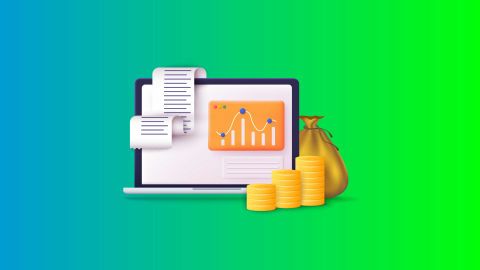Switching between the old and new tax regimes is quite an important decision, especially with changes that were introduced by the budget for 2024-2025. The Indian government has provided taxpayers with the flexibility to choose between these two regimes based on their financial goals and income structures. Both of these tax regimes have their own innate benefits and limitations. While the old regime allows an array of exemptions and deductions, the new regime is more focused on lower tax rates with fewer exemptions. Learning how to switch between old and new tax regime is integral if you want to maximise your saving from taxes while remaining compliant to the legal rules and regulations.
Understanding the regimes
The old tax regime is ideal for people having substantial investments and high expenses since it allows deductions and exemptions under various sections like Section 80C, 80D, and HRA. At the same time, the new regime has lower tax rates but excludes most of the deductions, making it more suitable for those who value simplicity and have less complex income sources. The new regime is especially useful for people who earn less or have very small investments, in which case detailed tax planning is not required. Knowing about the benefits and limitations of both regimes, including their impact on your taxable income and long-term financial goals can help you decide which one best suits your financial situation.
Who can switch?
The ability to switch between the old and new tax regimes is available to both salaried individuals and those with income from business or profession, but the rules and flexibility differ significantly between these groups.
Salaried individuals have the advantage of being able to choose their preferred tax regime each financial year. This annual flexibility allows them to reassess their financial situation, deductions, and exemptions regularly, enabling them to optimise their tax savings based on changes in income or financial goals.
On the other hand, individuals with income from business or profession face a more restrictive process. They can switch between regimes only once in their lifetime while they continue to have business income. If they choose to revert to the old regime after opting for the new one, they are locked into the new regime for all subsequent years unless they cease to have business income. This one-time switch requires careful consideration, as it has long-term implications for your tax planning and overall financial strategy.
Salaried individuals - flexibility with annual switching
Salaried individuals in India now have the flexibility to choose between the old and new tax regimes every financial year, thanks to the updates introduced in the Union Budget 2024-25. This annual choice allows you to review your financial situation each year and decide which tax regime is more beneficial for your needs.
The old regime is the best for people availing of several deductions and exemptions, including those under Section 80C up to Rs. 1.5 lakh, 80D, and HRA. With these deductions, it may substantially reduce your taxable income, making this regime very good for those who have huge investments either in savings schemes, insurance, or home loans. However, if your income structure has fewer deductions, the new tax regime will be more suitable. Under this regime, different income brackets have lower rates of tax but most deductions and exemptions are removed. For example, in the new regime, income up to Rs. 3 lakh is absolutely tax-free and under section 87A rebate is given on incomes up to Rs. 7 lakh, making such income effectively tax-free as well.
Given the options, it is very important to reassess your income, investments, and likely tax liabilities under the two regimes annually. This freedom to choose every year offers great chances for saving more of your hard-earned money from taxation, as your financial condition evolves, because you continue to remain in the regime most suitable for your ever-changing needs.
Individuals with business/profession income - one-time choice
For individuals earning income from business or profession, the choice between the old and new tax regimes is significantly restricted as compared to salaried individuals. They are permitted to switch between these regimes only once during their lifetime. This rule means that once they make a decision, they must adhere to it permanently unless they cease their business activities.
This one-time choice carries substantial implications. While the old regime is full of deductions and exemptions which help reduce taxable income, thereby bringing down tax liability, under the new regime, the rates of taxation would be lower, but most deductions and exemptions would be discontinued. So, it has to be a choice based on the impact of either regime on total tax outgo and financial goals.
Given the irreversible nature of this choice, business owners and professionals should seek guidance from tax advisors. Advisors can provide a detailed analysis of how the tax regimes interact with their specific financial situation, including current income, potential deductions, and long-term financial plans. Thorough planning and professional advice are essential to ensure that the selected tax regime optimally aligns with both immediate and future financial needs, maximising tax efficiency and minimising liabilities over time.
Crucial considerations before switching regimes
Before making the switch between the old and new tax regimes, it is crucial to conduct a thorough evaluation of several key deterministic factors. While the old tax regime allowed several deductions and exemptions that can cut down your taxable income by a large extent, the new regime remains somewhat laid back on these factors. Look at the kind of deductions that can be availed by you in the old regime, including those for investments, insurance premiums, interest on loans, etc.
Consider the impact on your long-term financial goals of each regime and where they really line up best. Yes, the new regime brings down rates, but it also eliminates a lot of deductions that may continue to play a big role in keeping down how much you owe as income tax, depending on your finances. Be aware of the administrative requirements involved in making the switch. For example, filing Form 10IE with the Income Tax Department is necessary so as to formally notify them of your choice.
Switching tax regimes is a major decision that includes tax implications and may have an effect on your overall financial plan. It has to be a delicate balance between these factors, and professional advice should be necessary in ensuring that the choice one makes fulfills immediate and futuristic financial goals.
What if you have forgotten to select which regime you want?
If you forget to select a tax regime at the beginning of the financial year, the new tax regime will be automatically applied to salaried individuals. Employers are mandated to deduct taxes based on this regime if no choice is made. This default applicability has been introduced to make the tax processing easier, though it may not be beneficial for everyone.
However, all is not lost if you have missed this selection. You can rectify this during the filing of your ITR for the financial year. During the ITR filing process, you can choose the tax regime that you believe will be more beneficial for your financial situation. This flexibility allows you to assess your income, deductions, and overall tax liability to select the regime that best aligns with your financial profile.
When making this choice, it is important to carefully evaluate the tax implications of each regime. The old regime provides a plethora of deductions and exemptions which may help reduce your taxable income. On the other hand, the new regime offers relatively lower tax rates but generally eliminates these benefits. By selecting the appropriate regime during your ITR filing, you can optimise your tax liability and potentially recover any overpaid taxes.
Forgetting to choose a tax regime initially does not mean you have missed your chance. You can still rectify the situation by making the right choice during your ITR filing, thus ensuring that your tax planning aligns with your financial goals.
How to switch?
If you want to know how to switch between old and new tax regime, it is fundamental to consider both their benefits and constraints. Moreover, this switch from the old regime to the new regime requires careful planning and timely action. Salaried individuals can make this switch by informing their employer of their choice at the start of the financial year. It will help the employer make proper tax deductions in that particular year. For those having business income, this would entail filing of Form 10IE with the Income Tax Department before the last date for filing the income tax return. When deciding which regime to choose, consider your income, available deductions, and exemptions. The old tax regime offers various deductions that can lower your taxable income, while the new regime provides lower tax rates but eliminates most deductions. Ensure that all relevant forms and documents are accurately completed and submitted to avoid complications and optimise your tax benefits.
Other topics you might find interesting |
|||
When to submit form 10IE?
Form 10IE has to be filed by all individuals opting for the new tax regime, mainly those earning business or professional income. For salaried classes, Form 10IE is not applicable unless they have business income. The last date for submitting Form 10IE is on or before the due date for filing the income tax return of the concerned financial year. Timely submission of this form is crucial as it indicates your choice of tax regime to the Income Tax Department and ensures compliance with tax regulations. Moreover, after the latest changes introduced by the budget in 2024, it is paramount to know about the form 10IE prior to filing an income tax return and maximise savings.
What if I forget to file form 10IE?
If you forget to file Form 10IE within the given deadline, it may lead to some unforeseen complications. This is particularly key for if you are a business-owner or professional. If the form is not submitted by the due date, the taxpayer may be required to continue with the old tax regime for that financial year. This oversight can result in higher tax liabilities if the new regime was more beneficial. It is important to be proactive and ensure that all necessary forms are submitted on time. If you realise the mistake after the deadline, consult with a tax advisor to explore possible rectifications.
Conclusion
The process of how to switch between the old and new tax regime requires an in-depth evaluation of your financial situation, potential deductions, and long-term objectives. While salaried individuals have the advantage of making annual adjustments, those with business income must choose more permanently. Adhering to deadlines and accurately filing necessary forms is essential for a seamless transition. For personalised guidance, consulting with a tax advisor can provide valuable insights and help navigate the complexities of tax planning.
Essential mutual fund investment calculators to estimate potential earnings
|
|||




